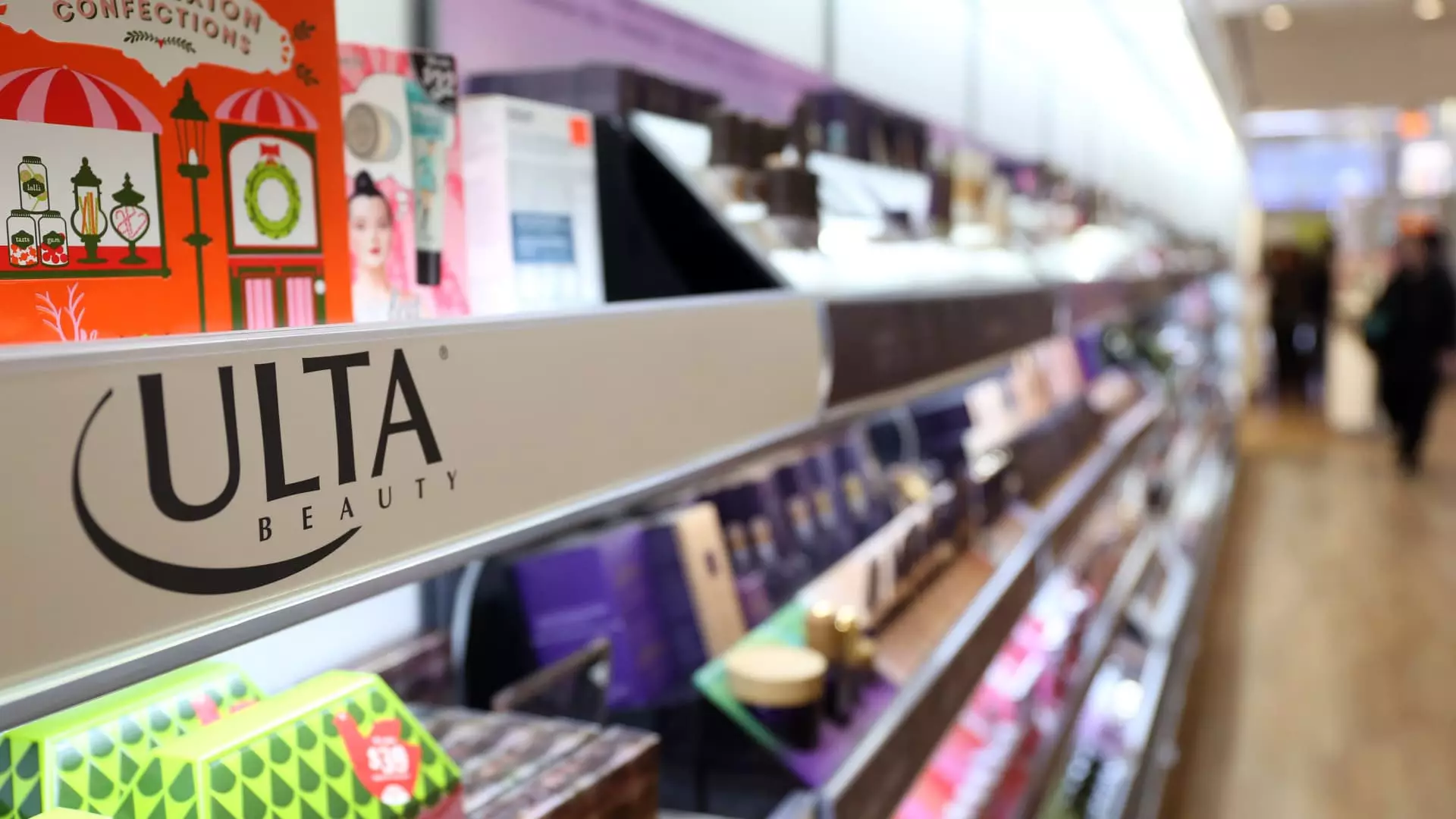Ulta Beauty, the popular beauty retailer, showcased an impressive performance in its fiscal third quarter, surpassing Wall Street’s expectations. This unexpected robustness comes at a time when various challenges loom over the beauty industry, including intensified competition and a noticeable decline in consumer demand for makeup and skincare products. In light of its recent triumphs, Ulta has adjusted its full-year forecast slightly upward, now anticipating net sales to fall between $11.1 billion and $11.2 billion, a modest increase from the prior estimate of $11 billion to $11.2 billion.
Earnings projections have also received a boost, shifting from the earlier range of $22.60 to $23.50 per share to a new range of $23.20 to $23.75. This growth trajectory has yielded significant enthusiasm in the stock market, with Ulta’s shares soaring approximately 10% in after-hours trading following the announcement of its financial results. For the most recent quarter ended November 2, they reported earnings per share of $5.14, exceeding analyst expectations of $4.54, with revenue reaching $2.53 billion—surpassing forecasts of $2.50 billion.
Despite recent successes, it is essential to recognize the nuance behind current trends. Ulta operates within a beauty sector that has demonstrated surprising resilience, even amid inflationary pressures affecting consumer spending habits. While many families are likely tightening their discretionary budgets, the beauty category has sustained itself effectively. Competitors such as Target, Walmart, Kohl’s, and Macy’s have observed this trend and are striving to capitalize on it by broadening their makeup and skincare lines.
However, leaders at Ulta are acutely aware of the challenges that lay ahead. CEO Dave Kimbell signaled a potential cooling in demand during an investor conference back in April, highlighting concerns over consumer behavior. Following this cautionary statement, Ulta’s subsequent quarterly results indicated a shift, reflecting a more discerning shopper base and increasingly stiff competition. This hesitation has been palpable; in August, the retailer missed earnings forecasts for the first time in four years and revised its outlook downward due to a drop in same-store sales.
Though the broader market trend remains favorable for beauty retail, Ulta’s past performance remains a point of contention. Their stock has notably declined by around 19% in the current year, starkly contrasting the S&P 500’s approximate 28% gain during the same period. While the latest quarterly figures demonstrate that Ulta is capable of weathering the storm, the persistence of mixed consumer signals signifies that there’s still work to be done.
In this complex environment, Ulta Beauty’s capacity to adapt and thrive will be tested. The right balance of strategic adjustments in product offerings, marketing efforts, and distribution channels may prove critical for maintaining growth. As we continue to monitor the performance of the beauty retailer, one point remains clear: the ability to read and respond effectively to the evolving preferences of consumers will be pivotal for Ulta’s future success.

